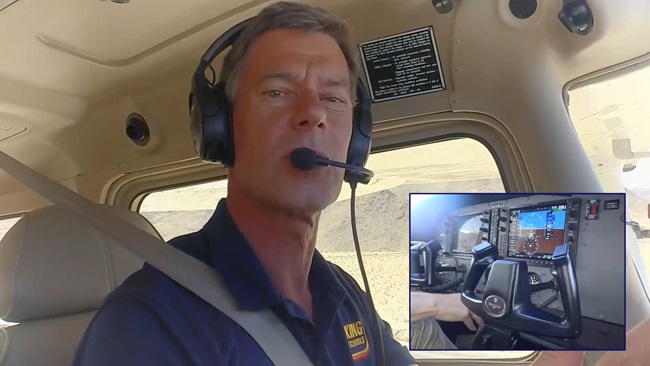AOPA Online Members Only -- AOPA ePilot Custom Content --Vol. 5, Issue 46

The following stories from the November 14, 2003, edition of AOPA ePilot were provided to AOPA members who expressed an interest in the particular subject areas. Any AOPA member can receive information customized to their areas of interest by updating their member record file online.
My ePilot - Experimental Interest
NEW GLASTAR SHIPS SPORTSMAN 2+2 KITS
A new model, the four-place New GlaStar Sportsman 2+2, is shipping. What is it? It can be almost anything-a tricycle-gear airplane, seaplane, or ski plane. It has a useful load of nearly 1,000 pounds, the company says, and a claimed 130-knot cruise speed. The Sportsman began its design life as an expanded GlaStar but quickly became a unique design with a longer fuselage that has a third door-and 37 cubic feet of storage space behind the pilot's seat that can accommodate two removable extra seats for people up to 5 feet tall. The aircraft is designed to accept 180- to 200-hp engines. See the Web site.
My ePilot - Student Interest, Training Tips
SKILLFUL HANDLING
Flying maneuvers well requires skill in fundamental aircraft control. A pilot having trouble maintaining altitude during cruise, ground reference maneuvers, or slow flight may be the victim of an undiagnosed flaw in his ability to level off from a climb or descent. Vanquish that difficulty and suddenly, performance of many maneuvers can improve.
Are you reducing power too quickly after leveling off? Low-powered trainers should be allowed to accelerate first. Are you fixating on a flight instrument rather than using outside references? It's a common problem and the subject of an "Instructor Report" article in the September 1999 AOPA Flight Training. "If you ever notice a pilot who seems to do very little in the way of controlling an airplane but still gets big results, it may be because that pilot knows an airplane will do most of the work if it is allowed to fly the way it was designed to," counsels "A Pilot's Guide to Airspeed" in the April 1999 AOPA Flight Training.
Light to moderate turbulence or "chop" causes many pilots to overcontrol. If this sounds like an area of concern to you, plan a lesson on rough-air technique, as recommended by Elizabeth Tennyson in the "Flying Smart" column published in the November 1999 issue of the magazine.
Review your technique and let these articles guide you in making adjustments. Then hold yourself to a high standard. The FAA Practical Test Standards for various pilot certificates and ratings may allow, say, 100 feet above or below the assigned altitude for a maneuver. Do not get in the habit of thinking of an altitude as a 200-foot range of acceptable values-that's not professional thinking. "The pro treats the level-off altitude as if it is an impenetrable ceiling," observes Mark Twombly in his October 2003 AOPA Flight Training commentary "Continuing Ed: Fly Like a Pro."
Small corrections to your technique and increasing your understanding can bring big changes, or even break you free from some of those frustrating training plateaus discussed in Earl Downs' June 2003 AOPA Flight Training feature "Sophomore Slump." Then move on swiftly to the next level of your training with a renewed sense of accomplishment and confidence.
My ePilot - Training Products
KNAPSACK-STYLE FLIGHT BAG HAS PILOT-FRIENDLY FEATURES
You passed your checkride, and now you're ready to reward yourself for all those weeks, months, or even years of hard work. Pilotmall.com has debuted its latest pilot flight bag-a leather backpack with cell phone holder, identification holder, padded headset case, and transceiver pouch. It's available in six colors. The price is $149.95. For more information, see the Web site.
My ePilot - Student Interest, Final Exam
Question: Could you clarify what kinds of contact lenses are acceptable for flying?
Answer: Contact lenses that correct for distant vision only are acceptable to meet the vision standards for all classes of medical certificates. Contact lenses that correct for near visual acuity, as well as bifocal contact lenses, are considered by the FAA to be inappropriate for flying duties. Wearing one lens to correct for near vision and the other lens to correct for distance is also not acceptable. For more information, see AOPA's medical subject reports on vision.


